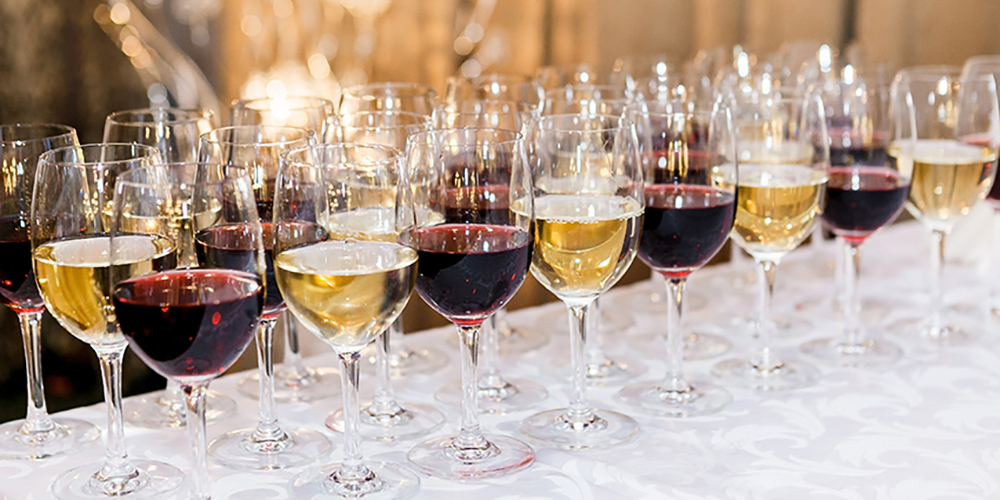Drink Up
with David Setley
What comes to mind when you think of the best wines in the world? Many of us immediately think of Western European old-world wine countries, or perhaps even California. However, how often do we consider wines from the Southern Hemisphere? Vitus Vinifera, the species of grape that produces the majority of the world’s wine, grows well between latitudes 30 and 50 in both the Southern and Northern Hemispheres. In fact, according to agriculture.gov.au, South America holds approximately 14% of the world’s wine market. Much of that wine (approximately 80%) comes from Chile and Argentina. Brazil and Uruguay each produce some wine, but little of it makes its way to the American wine market. In this article, allow me to introduce you to a few of the best South American wines.
Vines and wine production arrived in Argentina with the Spanish missionaries in the 16th century. Although the vines were intended to remain in Argentina, many were taken to Chile and Peru as well. Argentines are great wine lovers, having consumed as much as ten times the wine, per capita, that Americans do in the last century. Although that amount has dropped in more recent years, they still consume approximately 10 gallons annually, per person! That’s approximately 4 times what we do, on average. While Chile’s per capita wine consumption is nearly half of Argentina’s, it is still nearly double American consumption. Clearly, South Americans love their wine. The initial focus of Argentine wine production was on domestic consumption, while Chile’s focus was balanced between consumption and export. Since the 1970s, both countries have increased their wine exportation, mostly to the United States.
Chile’s wines, primarily produced in the Central Valley wine region, are significantly influenced by France. The viticultural climate is Mediterranean; perfect for growing grape vines. With the Pacific Ocean to the west and the protective Andes Mountains to the east, this microenvironment enjoys warm, dry days and cool, breezy nights. Relatively minimal amounts of white wines (chardonnay, sauvignon blanc, and viognier) are grown in Chile. Instead, red wines dominate, with cabernet sauvignon reigning over other varietals. Merlot, syrah, and pinot noir are produced in small quantities, whereas more than 33% of the nation’s wine production is cabernet sauvignon. This might surprise you, as many consider Carménère to be the signature red wine of Chile and for good reason. It’s delicious!
Chono Single Vineyard Carménère 2020, a well-structured and balanced wine, is a very reasonably priced and good-quality representation of the varietal. It has a deep ruby-red color, with intense aromas of red and black fruits, black spices, and vanilla. The tannins are soft and mature. I highly recommend it if you like red wine and have yet to try a Chilean Carménère. Alternatively, for a great offering of Chile’s most prolific varietal, try the cucao cabernet sauvignon gran reserva 2020. It has aromas of red fruit﹘like cherry, blackberry, and blueberry﹘as well as notes of nuts, clove, and nutmeg. This wine is smooth but intense, with rich tannins and a good integration of the fruit flavors and oak. The long finish makes this wine memorable.
The US and global markets became more aware of Argentine wines in the 1990s. Mendoza, the country’s largest wine region, is home to the varietal that put Argentina on the world wine map: malbec. Here’s a fun fact for you: a French agronomist named Michel Pouget was hired by the Argentine government to improve wine farming in Mendoza in a project named Quinta Agronomica de Mendoza. This project was approved on April 17, 1853. Pouget imported three of the classic red Bordeaux varietals: malbec, cabernet sauvignon and cabernet franc. All three grew, but malbec proved to be the game-changer for Argentina. In honor of this, April 17 is now recognized as World Malbec Day. Malbec brought Argentine wine to the world market. There are so many great examples of this varietal. My favorite is the El Esteco Don David Reserve Malbec, and it’s not just because of the name! This wine is 100% Malbec grapes, is well-balanced, and features black plum, pipe tobacco, and toasty vanilla aromas. On the palate, you will be treated to tastes of spicy dark fruits, chocolate, almonds, and a long, satisfying finish. It’s a classic Argentine malbec. The Don David pairs perfectly with grilled meat, especially lamb, or grilled or roasted vegetables.
Varietals other than Malbec grow well in Argentina as well and are certainly worth a taste. El Esteco Don David has an excellent cabernet sauvignon reserve that has earned a 92-point score from James Suckling and demonstrates how well this varietal has been developed in Argentina. Paul Hobbs, one of the world’s leading winemakers, has partnered with an Argentine vineyard in Mendoza and has released the Vina Cobos Cocodrilo Corte Red Blend. This is a classic Bordeaux-style blend of 76% cabernet sauvignon, 14% malbec, 8% cabernet franc, and 2% petit verdot. It is my top recommendation from Argentina. If you are a fan of Bordeaux red blends, please give this wine a try.
Perhaps now you will consider a South American wine – they won’t disappoint. As always, contact me with any questions at dsetley@passionvines.com, or stop into the store. Until next time, happy wining!
David Setley is enjoying his retirement from higher education as a wine educator and certified sommelier at Passion Vines in Somers Point, New Jersey.










